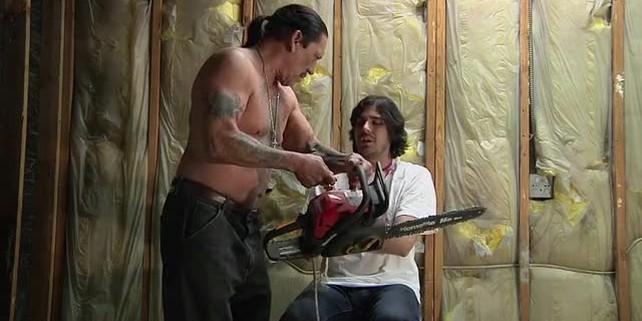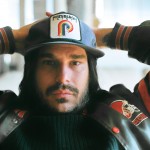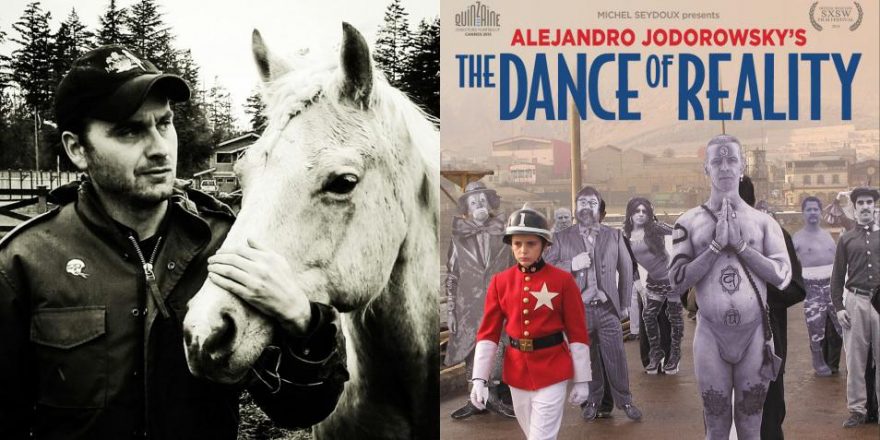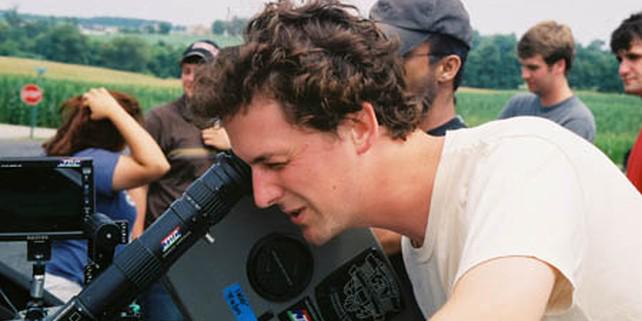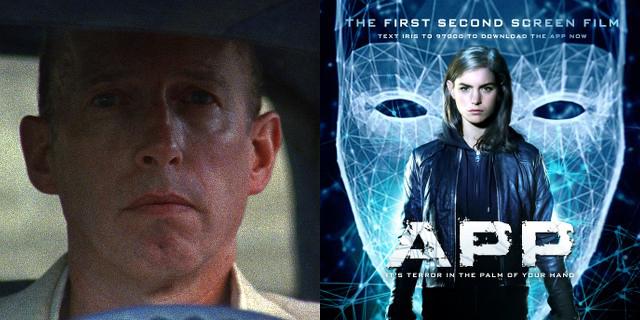Schlemiel! Schlimazel! Hasenpfeffer Incorporated!
In 1974, Miller-Milkis Productions and Paramount produced a TV show called Happy Days set in Milwaukee, Wisconsin, about a teenager, Richie Cunningham, and his family. In 1976, Paramount developed the spin-off Laverne & Shirley, about roommates who worked as bottle cappers in the fictitious Shotz Brewery, also in Milwaukee.
Sitting cross-legged on my grandmother’s orange shag carpet eating a Salisbury steak TV dinner, I realized something at a very young age: Hollywood wants a piece of Milwaukee!
I decided that if Milwaukee was good enough for the Fonz and Laverne and Shirley, then it was good enough for me.
I’m an Italian-American independent director, producer, and screenwriter born in Milwaukee, and my work is inspired in equal parts by my upbringing in my hometown, with its desolate streets and abandoned buildings and unique color palate, and by the films of directors such as Jean-Pierre Melville, John Cassavetes, Stanley Kubrick, Jørgen Leth, Francis Ford Coppola, Martin Scorsese, Quentin Tarantino, and Wong Kar-wai.
Coppola’s Apocalypse Now is my favorite film of all time, and I wanted to make my version of Apocalypse Now about an ex-CIA agent in Milwaukee. One of my favorite directors, Chris Smith, made a film called American Job, starring Randy Russell, which inspired me to pursue my own career as a director. After seeing this film, I realized that in Randy I had found my Willard and began a four-year journey with him making a Super 8mm feature film. We made Modus Operandi from the ground up with our own hands, with no money but with the perseverance and talent of my dedicated cast and crew.
New York City and Los Angeles are the largest media markets in North America, but that doesn’t mean you can’t make films in Milwaukee. There are no filming permits in Milwaukee as long as you don’t block traffic, and locations are very supportive and will usually let you shoot for free. You never get bogged down in traffic because no location is more than 20 minutes away. Milwaukee is non-union but you can get anything you would ever want from Chicago. The locations are vast in Milwaukee: there are 240 National Register of Historic Places listed in Milwaukee County, and Lake Michigan – one of the biggest lakes in the world – is right on your doorstep. Moreover, Milwaukee cast and crew work on each other’s indie projects for free on their days off in a constant pursuit of helping one another complete their short- or feature-film projects.
Having no money for my movies, I’m always stealing tricks from Hollywood such as hot chicks, stunts and explosions. The more beautiful, free-spirited women you can get into a low-budget film, the easier it is for the audience to forgive your script. After that, all you have to do is blow up a vintage Mercedes and take a page from the James Bond franchise by having a topless girl on a speedboat.
I have been fascinated with Tokyo since seeing Seijun Suzuki’s Tokyo Drifter and Branded to Kill, and wanted to shoot there for Modus Operandi. With no way to take a crew to Tokyo, I came up with a plan to work around that problem. I watched Sofia Coppola’s Lost in Translation over and over again, cherry-picking all the best shots and locations; this way, I was able to storyboard everything beforehand. I saved up enough money working at a casino to send actress Cookie Johnson and cameraman Xav Leplae to shoot the Tokyo sequence. Xav (armed with a Super 8 camera, 10 rolls of film, and the storyboards) and Cookie (with had a suitcase containing white gogo boots and a red trench coat) boarded a bus from Milwaukee to Chicago and then took a non-stop flight to Tokyo. The budget only allowed for hostel accomodation, and as many free shots as they could pull off while they were there. Even though I was not able to be there to direct the scenes, I knew they would come back with visually stunning images because of Tokyo’s unique setting.
When I was making Modus Operandi, I wanted to give a nod to Hitchcock, who has been an influence on me since I was 13 years old, so I thought, Why not do a reenactment of the North by Northwest cropduster scene? Unfortunately, I could not find an airplane pilot who was willing to do such a risky maneuver for free. But I found out soon after that you can get personal helicopter rides for $300, so I asked a pilot if he would take my cameraman Mark Escribano up with him and chase around my actor Mark Borchardt in the spirit of North by Northwest. The pilot was an ex-Vietnam helicopter pilot and was more than happy to help us shoot this scene.
I needed a bad motherfucker for the final scene in Modus Operandi; this guy would have to shove a stick of dynamite into some guy’s eye socket and light the fuse. There was only one person in the world that I wanted for this role, and his name was Danny Trejo! Danny’s agent Gloria was extremely helpful and worked with me to get Danny for eight hours – just enough time to shoot the scene and race him from the set straight back to the airport.
Modus Operandi’s world premiere took place in 2009 at Dennis Hopper’s CineVegas Film Festival, and the film was sold by our sales agent, Milwaukee native Jack Turner, to Kino Lorber. It was released theatrically (presented by Sasha Grey) in New York City, L.A. and beyond, garnered a positive review in Roger Ebert’s Movie Yearbook 2010, and now can be seen on VOD.
After the success of Modus Operandi, I took the Amtrak from Milwaukee, Wisconsin, to Miami, Florida, and then hopped a boat to Cartagena, Colombia. I was slated to direct Skinny Dip in South America, an action film starring Sasha Grey and Danny Trejo. I lived and worked in Santa Marta, Colombia, for six months of preproduction until the Hollywood red carpet was pulled from under my feet and the funding fell through. I’ve encountered myriad problems and have been knocked to the canvas innumerable times. But with Modus Operandi I’ve proven that I can go 12 rounds – and now the next bell is sounding.
I left Colombia, South America, and returned to Milwaukee, Wisconsin, where I regrouped and started preproduction on a Super 16mm film, Snapshot, starring Cade Carradine, Cookie Johnson, Randy Russell, Mark Borchardt, and Danny Trejo, about a photographer who gets caught in a harrowing labyrinth of intrigue and danger when some 35mm photographs fall into his possession. It’s a mystery with car chases, pool parties, DeLoreans, yachts, a 20-story body fall, and a Danny Trejo bloodbath. We will have everything wrapped up by August but are still looking for funding for the music and keeping our fingers crossed for a January premiere.
If you don’t have a lot of money, you need to be relentless and never take no for an answer, even after you feel like you have given all you can and have nothing else more to offer. This business isn’t for the faint of heart; you need to have thick skin and never take anything personally. It’s just business.



